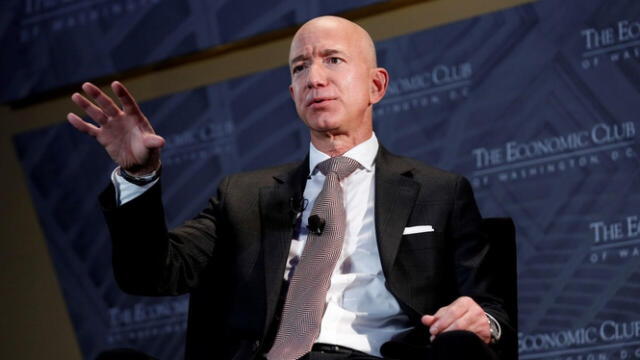Who has surpassed Walmart as the world’s largest retailer? A fast-growing stock takes the lead
Discover which company has dethroned Walmart as the world’s largest retailer. This rapidly expanding growth stock has overtaken the retail giant, signaling a shift in the global market.

In an unexpected shift within the retail industry, Walmart, the long-standing leader in global retail, has officially lost its position as the world’s largest retailer. Once the undisputed giant, Walmart’s grip on the market has been loosened by a rapidly expanding competitor. This change marks a significant moment in the retail landscape, as the new contender, with its aggressive expansion strategy, has now claimed the top spot.
Amazon’s growth has been nothing short of extraordinary. With a global presence and a business model tailored to the evolving demands of today’s consumers, this company has quickly surpassed Walmart’s profit. As Walmart faces new competition, it raises important questions about how the future of global retail will unfold and what changes are necessary for established giants like Walmart to stay relevant in an increasingly competitive market.

ALSO SEE: Costco's bourbon bonanza: $2,000 whiskey sells for $260, a rare find ignites frenzied buying
Walmart's decline in retail dominance
For decades, Walmart maintained its position as the dominant force in retail, with more than 11,000 stores across the globe and a well-established brand name. However, as consumer preferences have shifted towards e-commerce and more personalized shopping experiences, the retail giant has found itself struggling to keep pace. This decline is evident in both the company’s stock performance and its growing difficulty in competing with new retail models that are more flexible and tailored to today’s market.
Walmart’s traditional brick-and-mortar business, while still profitable, has faced headwinds as online shopping has become increasingly dominant. Consumers are now looking for convenience and fast delivery, areas where online-first companies and tech-driven retail brands are excelling. Even though Walmart has made strides to enhance its e-commerce offerings, it’s clear that its competitors have gained ground, pushing it further away from its former position of retail dominance.
Amazon: The new leader in global retail
While Amazon's website sales are the company's largest revenue source, they are often what most people associate with the brand. However, it's crucial to recognize that Amazon's strongest growth is happening in other areas of its business.
For example, in addition to selling products directly on its site, Amazon also enables third-party sellers to sell their goods. The company generates income through commissions and fulfillment fees for facilitating these third-party transactions. In Q4, this sector contributed $47 billion in revenue, a 9% increase compared to the previous year, helping Amazon surpass Walmart in total sales.

Jeff Bezos is Amazon's controlling shareholder. Photo: France 24
Furthermore, Amazon's advertising division is rapidly becoming one of its fastest-growing sectors. While its Q4 ad revenue reached $17 billion, which is still a relatively small figure, it marked an 18% increase and continues to offer significant growth potential. The launch and subsequent expansion of Amazon's advertising business have been a major growth catalyst, leveraging its existing digital platform to boost revenues.
What led to Walmart losing its title?
Several factors have contributed to Walmart’s fall from the top spot. One of the most significant reasons is the rise of online shopping and the shift towards digital-first retail brands. While Walmart has made moves to bolster its e-commerce operations, it is facing increased competition from companies that have built their business models around the online experience from the start.
Additionally, Walmart has struggled with maintaining consistent growth in the face of changing consumer habits. In particular, younger shoppers are flocking to brands that offer not only convenience but also a stronger digital presence and personalized shopping experiences. Meanwhile, the new leader in retail has capitalized on these shifts by offering competitive prices, quality products, and a customer experience designed for a modern world. As consumer expectations evolve, Walmart has been slow to adjust, giving rise to the new retail giant.
Will Walmart reclaim its title?
Despite losing its position as the largest retailer, Walmart is far from finished. The company still maintains a strong presence in many markets, particularly in North America. Walmart’s ongoing investments in e-commerce, supply chain optimization, and store redesigns are aimed at strengthening its competitive edge. However, whether these efforts will be enough to reclaim the title of the world’s largest retailer remains to be seen.
Looking ahead, Walmart may need to embrace more drastic changes to stay competitive in a rapidly evolving landscape. The company’s next steps will likely include further integration of technology, enhanced customer experience offerings, and potentially exploring untapped markets in a bid to regain the edge it once held. For now, the new leader in global retail has set the bar high, and it will take significant innovation for Walmart to reclaim its former position.












